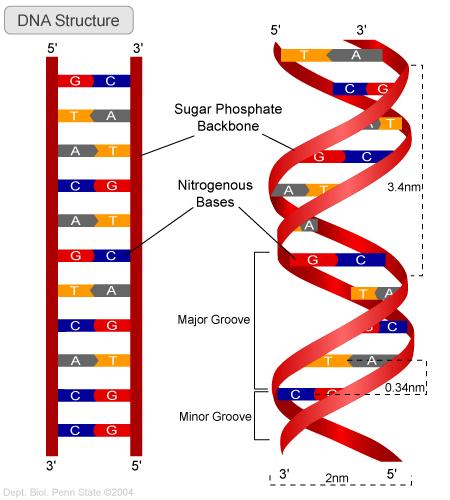"Although it may look complicated, the DNA in a cell is really just a pattern made up of four different parts called nucleotides. Imagine a set of blocks that has only four shapes, or an alphabet that has only four letters. DNA is a long string of these blocks or letters. Each nucleotide consists of a sugar (deoxyribose) bound on one side to a phosphate group and bound on the other side to a nitrogenous base. There are two classes of nitrogen bases called purines (double-ringed structures) and pyrimidines (single-ringed structures). The four bases in DNA's alphabet are:
Adenine pairs with thymine and cytosine pairs with guanine. Anything else and it becomes a mutation. DNA comes in a shape known as double helix, which is basically a twisted ladder. |  Structure of DNA. (Image 22) |
Home | History | Innovators | Crime Scene Analysis | DNA Testing | Toxicology | Criminalistics | Autopsy | Citations